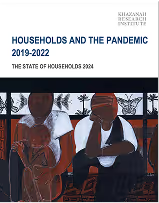

The theme for the United Nations’ (UN) International Women’s Day this year on 8 March is “Women in a Changing World of Work: Planet 50-50 by 2030”. The idea behind this theme relates to the broader UN’s 2030 Agenda for Sustainable Development which includes achieving gender equality and empowering all women and girls as one of its goals.
As we celebrate this year's International Women’s Day, it is timely for us to reflect on and examine the state of women in Malaysia. The World Economic Forum publishes a report on gender gap yearly, which measures the relative gap between men and women in an index across four key areas—health, education, economy and politics. In the latest report last year, Malaysia ranks 106th out of 144 countries. In ASEAN, we rank higher only to Cambodia. Most of our regional peers rank significantly above us—the Philippines at 7th, Singapore, 55th, Thailand, 71st and Indonesia, 88th.
.png)
If we inspect closer, one of the main reasons behind the worrying gender gap lies in Malaysian women’s participation in the economy. The State of Households II report published by Khazanah Research Institute last year shed some light on this issue. One way to examine this is to look into the labour force participation rate (LFPR). The LFPR measures the proportion of the working-age population (i.e. those aged 15 to 64 years old) who are currently employed or are actively looking for employment. While LFPR for women in Malaysia has improved over the years, it has been trailing far behind that for men ever since the 1980s. In 2015, the LFPR for women stood at 54.1%, a stark contrast compared to 80.6% for men. This implies that on average, almost half of all working age women in Malaysia are not in the workforce, compared to less than 20% for men.
What is more surprising perhaps is how large the gap is compared to most of our regional peers, which does not exceed 20 percentage point. For example, per the latest data, Thailand has a gap of 16.8 percentage points, 16.3 in Singapore and 7.2 in Myanmar. Ours stood at above 26 percentage point.
.png)
Even if women do enter the labour force, there is a higher likelihood for them to be unemployed compared to men. Over the past three decades, the unemployment rate for women has consistently been higher than men in Malaysia, except for only one year—1999, and the gap has been growing in recent years. In 2015, the unemployment rates were 2.9% for men and 3.4% for women. This suggests that the likelihood for women to be unemployed is about 18% higher than that for men. Again, by regional and international comparison, the gender gap in terms of unemployment is significantly more pronounced in Malaysia than many other countries.Perhaps more worrying is when we look deeper into this trend by education. In 2015, tertiary-educated women have the highest unemployment rate at 4.3% compared to women with other educational levels. For men, the trend is reversed—those with no formal education are the ones with the highest unemployment rate. This suggests that, for women, the more educated you are, the harder it is for you to be employed in Malaysia. In other words, tertiary-educated women find it hardest to get employed relative to men—a fact that is more alarming considering that women constitute 70.3% of enrolment in tertiary-education institutions, and do not necessarily perform worse than men.
.png)
It is important to note that these statistics do not necessarily and conclusively point towards formal discrimination against women in the labour market. What it does point towards is the need for greater and more in-depth study into the issue, particularly given how different we are from other countries. A better understanding of this issue could help inform the necessary policies needed for Malaysian women to participate effectively in the economy, and ultimately create a more equitable and inclusive economy. On this, it is heartening that our government has already started a number of initiatives aimed at encouraging women’s higher participation in the labour force, for example the Women Career Comeback and Single Mother Skill Incubator Programme (I-KIT). While addressing this issue from the economic aspect can serve as a meaningful first step, it should also be recognised that gender equality extends beyond economics. Gender equality needs to be understood within the broader context of society and politics, and the institutions and norms that govern them as well. As Muhammad Ali Jinnah, the founding father of Pakistan said, “No nation can ever be worthy of its existence that cannot take its women along with the men. No struggle can ever succeed without women participating side by side with men”.Women, after all, are the key to half of the nation’s potential.

Article highlight


Conclusion
Download Resources
Files
Attributes
Footnotes
References
DOS. 2016. Salaries and Wages Survey Report 2015. Putrajaya: Department of Statistics Malaysia.
ILO. n.d. ILOSTAT Database. Geneva: International Labour Organization.
WEF. 2016. The Global Gender Gap Report 2016. Geneva: World Economic Forum.
Photography Credit
Related to this Publication
Related to
Want more stories like these in your inbox?










